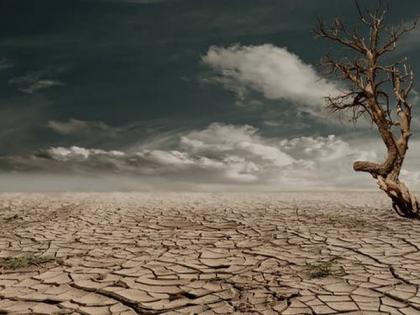Allergy seasons likely to become longer, intense due to climate change: Study
By ANI | Published: March 17, 2022 01:27 PM2022-03-17T13:27:28+5:302022-03-17T13:35:07+5:30
According to new research led by the University of Michigan, allergy seasons are likely to become longer and grow more intense as a result of increasing temperatures caused by manmade climate change.

Allergy seasons likely to become longer, intense due to climate change: Study
According to new research led by the University of Michigan, allergy seasons are likely to become longer and grow more intense as a result of increasing temperatures caused by manmade climate change.
The research was published in the journal, 'Nature Communications.'
Pollen emissions could begin 40 days earlier in the spring than it has been seen between 1995 and 2014 at the end of this century. Allergy sufferers could see that season last an additional 19 days before high pollen counts might subside.
In addition, thanks to rising temperatures and increasing CO2 levels, the annual amount of pollen emitted each year could increase up to 200 per cent.
"Pollen-induced respiratory allergies are getting worse with climate change," said Yingxiao Zhang, a U-M graduate student research assistant in climate and space sciences and engineering.
"Our findings can be a starting point for further investigations into the consequence of climate change on pollen and corresponding health effects," he added.
U-M researchers developed a predictive model that examines 15 of the most common pollen types and how their products will be impacted by projected changes in temperatures and precipitation. They combined climate data along with socioeconomic scenarios, correlating their modelling with the data from 1995 through 2014. They then used their model to predict pollen emissions for the last two decades of the 21st century.
Allergies symptoms run the gamut from mildly irritating, such as watery eyes, sneezing or rashes, to more serious conditions, such as difficulty breathing or anaphylaxis. According to the Asthma and Allergy Foundation of America, 30 per cent of adults and 40 per cent of children suffer from allergies in the U.S.
The grasses, weeds and trees that produce pollen are affected by climate change. Increased temperatures cause them to activate earlier than their historical norms. Hotter temperatures can also increase the amount of pollen produced.
Allison Steiner, U-M professor of climate and space sciences and engineering, said the modelling developed by her team could eventually allow for allergy season predictions targeted to different geographical regions.
"We're hoping to include our pollen emissions model within a national air quality forecasting system to provide improved and climate-sensitive forecasts to the public," she concluded.
( With inputs from ANI )
Disclaimer: This post has been auto-published from an agency feed without any modifications to the text and has not been reviewed by an editor
Open in app